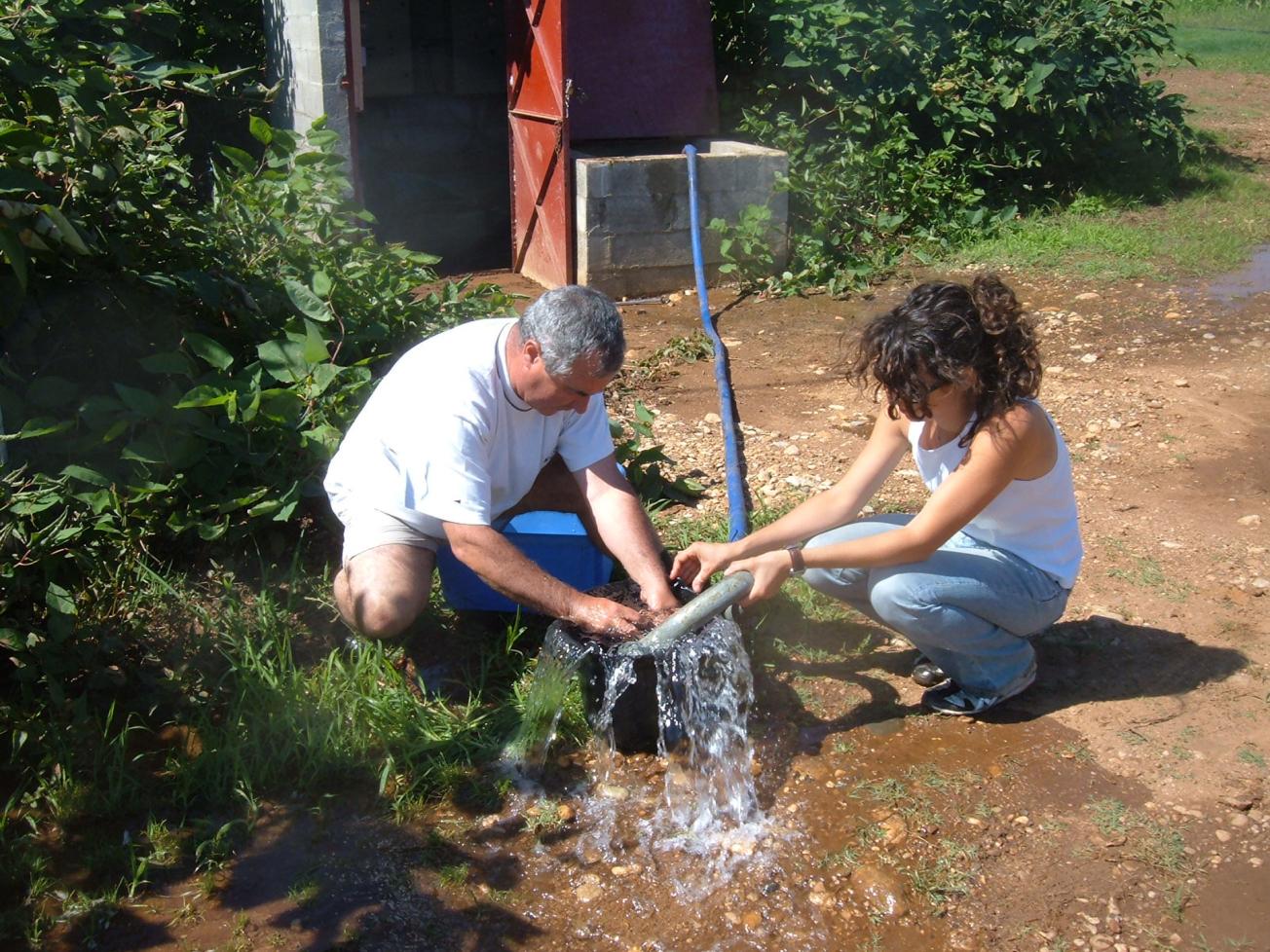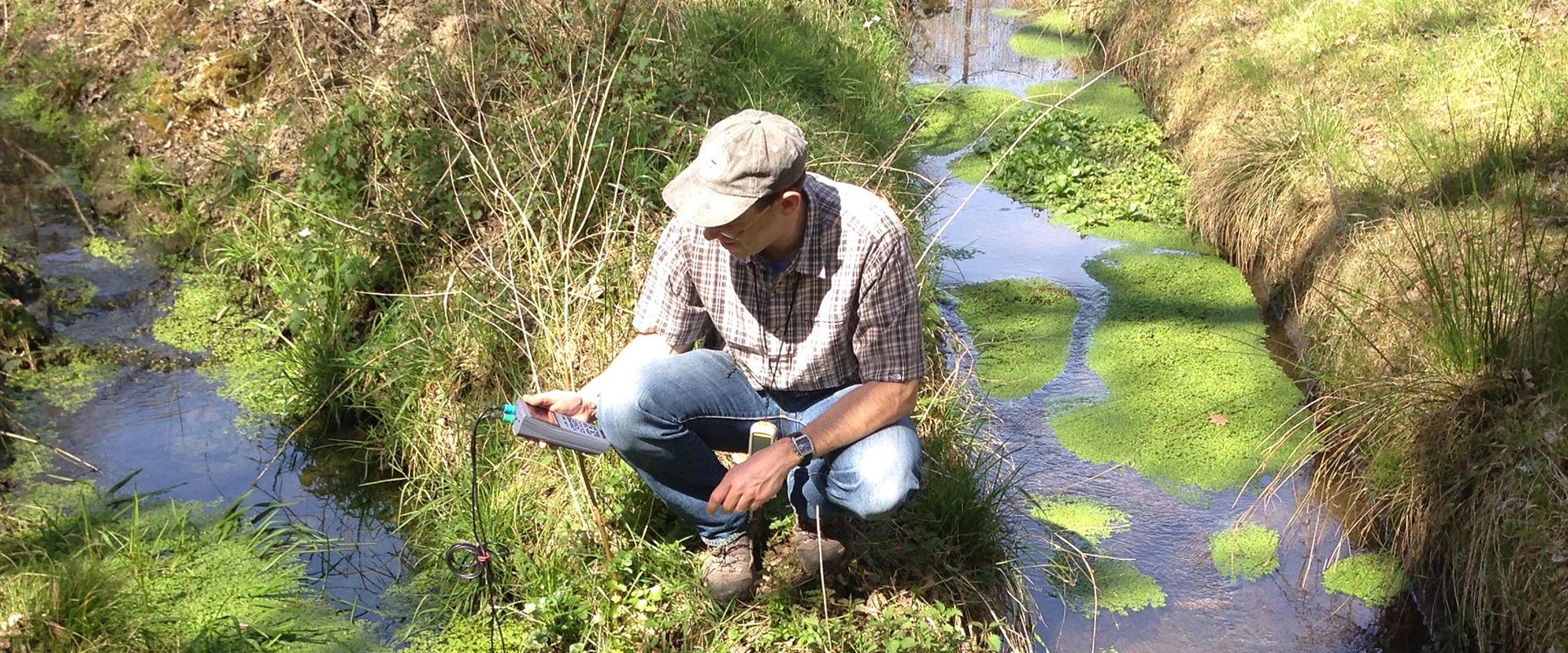
Water sampling for chemical and isotopic analysis (Ain, 2008).
© BRGM
The EU Water Framework Directive’s goal of achieving a “favourable status” of all surface and groundwaters has given rise to numerous research programmes on undesirable substances in water, and especially nitrates, whose presence in excessive quantities regularly requires drinking water abstraction points to be closed.
Identifying and differentiating sources of nitrates
While monitoring nitrate concentrations is essential to measure contamination over time and prevent any consequences on health, it is equally necessary to identify and differentiate their sources, as doing so is the key to appropriate preventive action. This was the goal of the Isonitrate project, conducted from 2007 to 2010 under BRGM leadership and in partnership with the University of Ghent (VITO - Vision of Technology), the International Water Office and UNESCO.
While agricultural nitrates (use of nitrate fertilisers) are most frequently incriminated, nitrates in urban effluent can also contribute to water quality degradation. Isonitrate works on the principle of identifying the isotopic “signature” of the nitrates found in water, which – because it differs depending on sources – allows the sources to be located.
15-month study of 4 sites in the Alsace plain
To demonstrate the feasibility of a multi-isotope tool (combining nitrogen isotopes with the oxygen in nitrates and in boron as a nitrate co-migrant) to determine sources in the event of contamination, Isonitrate studied four sites in the Alsace plain over a 15-month period: one unpolluted site used as a reference, one site affected a priori by mineral inputs only (fertilisers used in vineyards), one site with organic inputs (organic soil improvers), minerals (fertiliser) and urban effluent, and one site where natural denitrification was observed.
Two methodology guides for players in the water sector
The approach, based essentially on physico-chemical and isotopic analyses, also included a cost-benefit assessment of the different tracing methods. The result was the production of two guides for players in the water sector, one defining criteria to assess the relevance – or not – of using the multi-isotope tool, and the other describing the isotopic monitoring process.
In late 2009, the project results were shared during an international workshop with nearly 150 participants involved in implementation of the EU Framework Water Directive.







